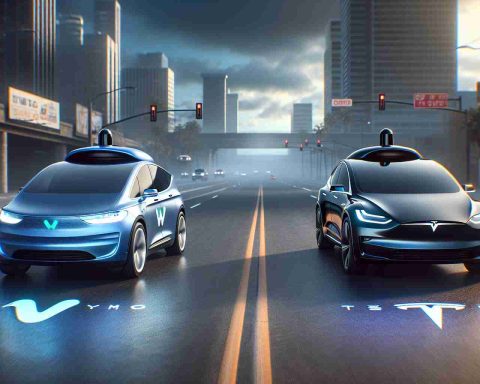Milestone in Electric Vehicle Manufacturing
In a groundbreaking move towards sustainable transportation, Mahindra & Mahindra has officially launched an advanced electric vehicle (EV) manufacturing and battery assembly plant at its Chakan site. This facility is poised to manufacture the company’s electric SUVs, the Mahindra BE 6 and Mahindra XEV 9e.
The company has earmarked Rs 4,500 crore from a total investment of Rs 16,000 crore for this initiative, which encompasses various aspects of EV technology and manufacturing. The new plant boasts a sprawling footprint of around 88,000 square meters and is recognized as one of the most automated and integrated manufacturing ecosystems in the industry, leveraging over 1,000 robots.
With cutting-edge features such as an AI-driven body shop and an advanced robotic paint shop, Mahindra is focused on ensuring quality and efficiency throughout its processes. All operations are monitored via an IoT-based ‘Nerve Center’, providing real-time insights and ensuring end-to-end traceability.
The facility is also notable for its compact battery assembly line, utilizing industry-leading technology for high-performance battery production. The Mahindra BE 6 and XEV 9e, both based on the innovative INGLO platform, are set to hit the market with impressive features, including extensive range capabilities and rapid charging options.
With bookings opening soon, Mahindra is on track to transform the electric vehicle landscape in India.
Revolutionizing Electric Mobility: Mahindra’s New EV Manufacturing Hub
In a groundbreaking move towards sustainable transportation, Mahindra & Mahindra has officially launched an advanced electric vehicle (EV) manufacturing and battery assembly plant at its Chakan site. This facility is designed to manufacture the company’s electric SUVs, the Mahindra BE 6 and Mahindra XEV 9e.
The company has earmarked Rs 4,500 crore from a total investment of Rs 16,000 crore for this initiative, which encompasses various aspects of EV technology and manufacturing. The new plant boasts a sprawling footprint of around 88,000 square meters and is recognized as one of the most automated and integrated manufacturing ecosystems in the industry, leveraging over 1,000 robots.
Features and Innovations
This new facility is equipped with several cutting-edge technologies:
– An AI-driven body shop that enhances the manufacturing process through automation.
– An advanced robotic paint shop designed to improve paint quality and reduce waste.
– An IoT-based ‘Nerve Center’, providing real-time operational insights and ensuring end-to-end traceability.
The plant also includes a compact battery assembly line, utilizing industry-leading technology for high-performance battery production. This innovation is critical as battery performance remains a pivotal factor in the adoption of electric vehicles.
Market Insights and Trends
As the demand for electric vehicles continues to surge, driven by rising environmental concerns and government initiatives, Mahindra’s strategic investment is timely. The Indian EV market is expected to grow significantly in the coming years, with sales projected to hit nearly 6 million units by 2025. Mahindra’s entry into this sector not only enhances its product portfolio but also positions it as a key player in the sustainable mobility landscape.
Use Cases and Target Audience
The Mahindra BE 6 and XEV 9e are targeted at urban commuters and families seeking eco-friendly vehicles that do not compromise on performance. Both models are based on the innovative INGLO platform, promising extensive range capabilities and rapid charging options that cater to modern-day users.
Pricing and Availability
Bookings for the Mahindra BE 6 and XEV 9e are set to open soon, with the market eagerly anticipating competitive pricing. The anticipated range for EVs in this segment typically falls between Rs 15 lakh to Rs 25 lakh, making these vehicles not only accessible but also attractive to a broad spectrum of consumers.
Pros and Cons
Pros:
– Advanced technology and eco-friendly manufacturing processes.
– Potential for improved battery performance and longevity.
– Significant investment aimed at scaling production and enhancing quality.
Cons:
– Initial pricing may position these vehicles out of reach for some consumers.
– Challenges in establishing a widespread charging infrastructure.
Future Predictions
With Mahindra’s new facility operational, predictions suggest that the company could capture a substantial share of the Indian electric vehicle market within the next few years. Continued investment in technology and infrastructure will likely play a crucial role in sustaining this growth.
For more information on Mahindra and its electric vehicle initiatives, visit Mahindra & Mahindra.












